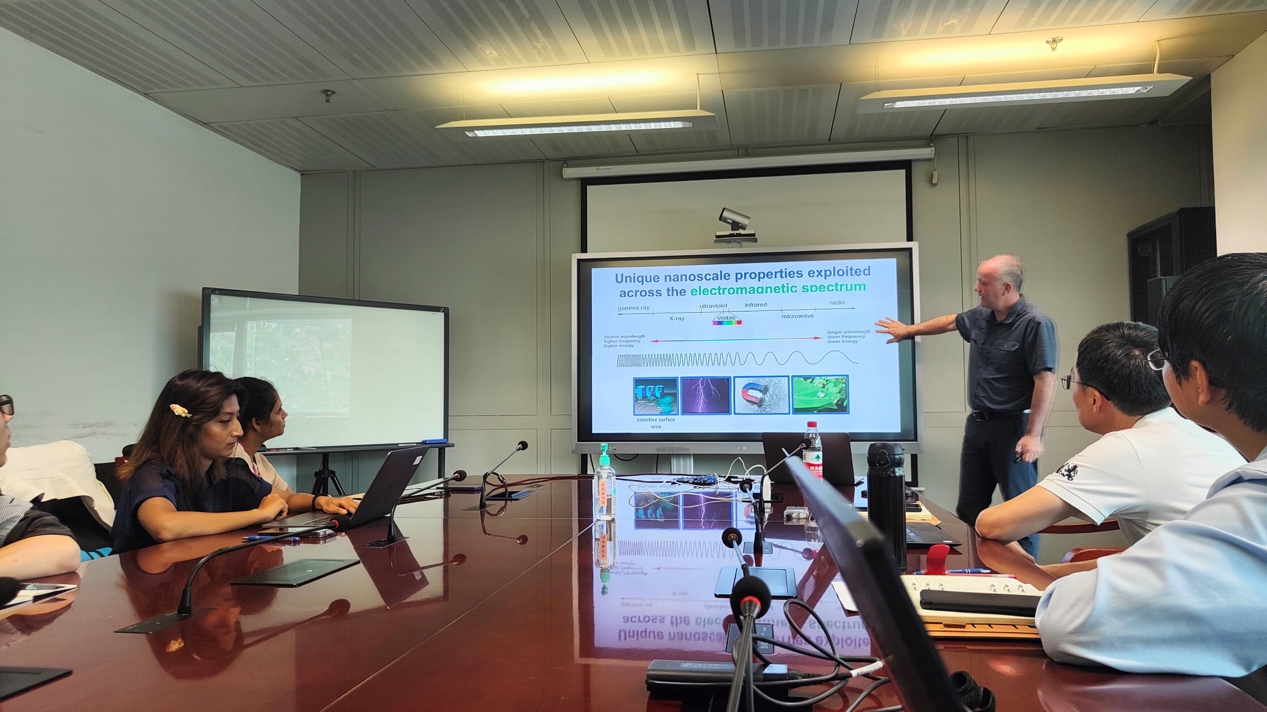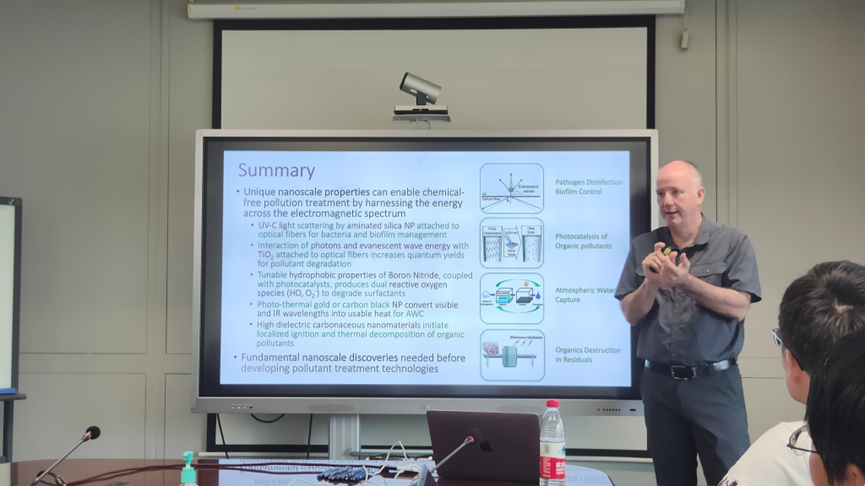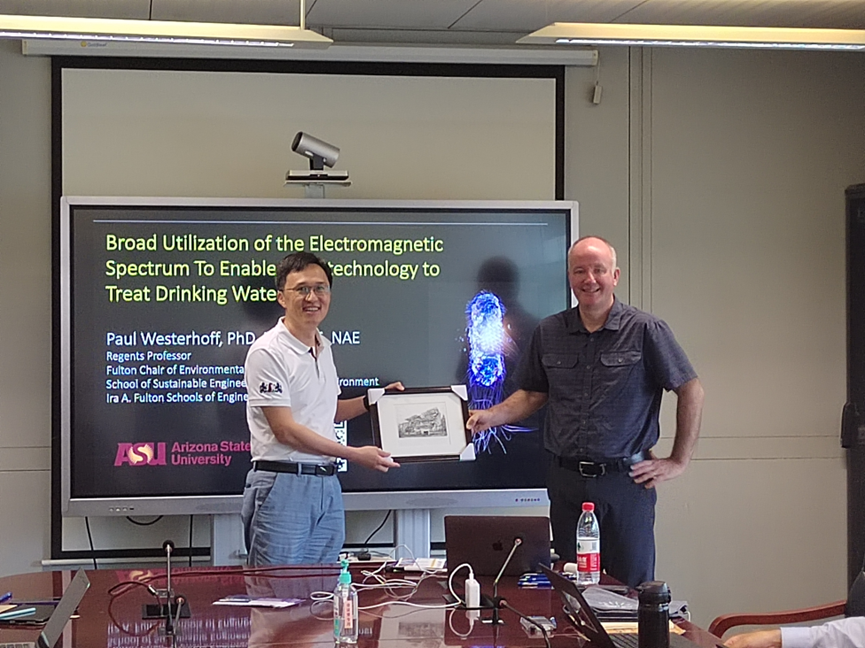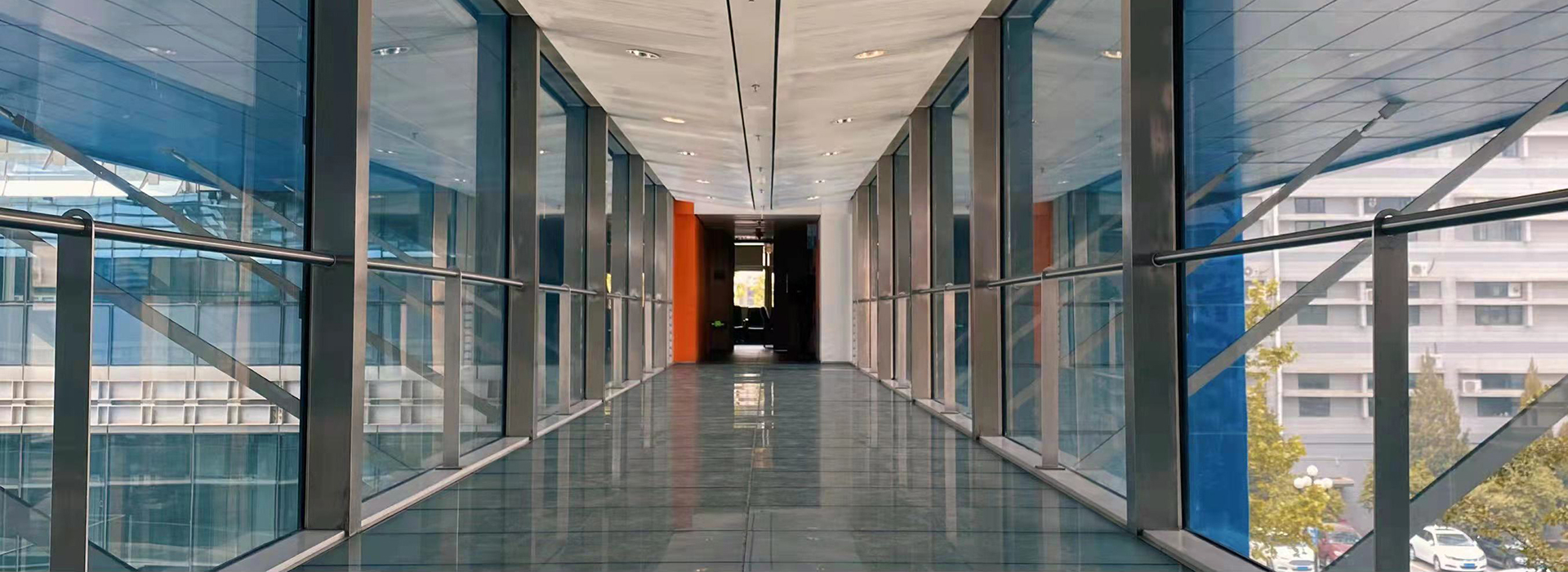On the morning of September 7th, Professor Paul Westerhoff from Arizona State University graced the 677th session of Tsinghua University's Environmental Academic Salon. He delivered an engaging presentation titled "Broad Utilization of Electromagnetic Spectrum to Enable Nanotechnology to Treat Drinking Water" for faculty members and students. The event was hosted by Associate Professor Chen Chao from Tsinghua University's School of Environment.

The scene from the Environmental Academic Salon
Professor Westerhoff commenced his talk by introducing the Nanotechnology Engineering Research Center, highlighting its basic situation and research progress. This institution, jointly established by research teams from various universities with support from the National Science Foundation in the United States, is dedicated to applying nanoscience and engineering technology to develop water treatment solutions tailored to specific needs. He provided a detailed overview of the current research and applications of electromagnetic spectrum water treatment technology, emphasizing that the development of functional nanomaterials using the electromagnetic spectrum contributes to meeting the dispersion and chemical pollution-free requirements of water treatment processes. Professor Westerhoff specifically highlighted recent developments by the team, including SiO2 nanoparticle-coated optical fiber-UVC irradiation processes effective in preventing pathogen replication and inhibiting biofilm formation. He also discussed BN+TiO2 photocatalytic materials for degrading the emerging contaminant PFOA, offering new insights into the application of electromagnetic spectrum and nanotechnology in water treatment. He anticipated broader prospects for the utilization of electromagnetic spectrum technology in various scenarios and delved into the adjustment of various nanoparticle properties to enhance their application effectiveness. He emphasized the need for strengthened research in areas such as large-scale preparation of nanomaterials and loading strategies in reactors to achieve the goal of chemical-free water treatment.

Professor Paul Westerhoff delivering the presentation
Following the presentation, faculty members and students engaged in a discussion with Professor Paul Westerhoff on various topics, including nanoparticle materials and environmental risks of emerging contaminants. Chen Chao expressed heartfelt gratitude to Professor Westerhoff for traveling such a long distance to deliver an insightful presentation to the faculty and students from the School of Environment. As a token of appreciation, Chen Chao presented him with a commemorative gift.

Photo of Chen Chao and Professor Paul Westerhoff
Expert Introduction
Professor Paul Westerhoff, Regents Professor at Arizona State University, was elected a member of the US National Academy of Engineering in 2023. His research spans innovative environmental nanotechnology, the generation and control of disinfection byproducts in water treatment processes, the source and characterization of natural organic matter, as well as the control and removal of algae and heavy metals in drinking water. Recognized for outstanding academic achievements and influence, he has received multiple awards, including the Clarke Prize. He has been consistently listed as a “Highly Cited Researcher” by Clarivate Analytics for eight consecutive years. Professor Paul Westerhoff previously served as an Executive Editor of Environmental Science & Technology and currently holds the position of Associate Editor of the journal.





